You are heavily into combat; the red clay under your feet feels heavy and damp; the balls are coming backstroke after stroke. You move side to side, trying to control the point. Your opponent, equally skilled, returns wide, and you are forced to extend even farther to reach the ever-widening angle, and then, WHAM! You go over on the side of your ankle. Your body’s weight tears down on your outer leg and your foot roll up below, and worst of all, you hear a POP!
What just occurred was a tearing of your lateral ankle ligaments, or a sprained ankle, caused by pressure so quick and unrelenting that your body’s ability to stretch was overpowered by the force.
Simple as a sprained ankle may sound, it can be a serious problem. Understanding the breadth and depth of such an injury can be tantamount to understanding and following the rehabilitation necessary to get back to playing strength.
A sprain is the most common type of ankle injury. It results from overstretching and tearing ligaments that hold together the bones of the ankle joint area. The rolling type of ankle injury, also known as inversion sprain, is the most common. After rolling your ankle, it can become difficult for you to run or even walk. Later, the area on the other side may swell and turn from purple to bluish. It can be very painful to stand, walk or even touch the side of your foot or ankle.
Medical evaluation and x-rays are necessary to determine if any bones have been broken. A doctor needs to assess the looseness of the structures. Also of importance is any limitation or blockage of foot-to-leg motion, which is described as the “range of ankle joint motion.”
There are varying degrees of ankle sprain:
- Minimal-mild swelling or pain, minor stretch or tearing, function somewhat okay maybe a color change
- Moderate pain and swelling, moderate tearing, not able to walk or stand without discomfort
- Severe-moderate-to-severe pain, very swollen, stiffness later, total tearing, joint very loose, poor ability to stand, may need immobilization, may need surgery
After the basic medical assessment has been performed, more specific specialist care may be required. Such situations include fracture or dislocation of the ankle or the surrounding bones, neurovascular injury, tendon or muscle tear, open wounds, or ankle joint blockage. Also, more severe symptoms seeming greater than the event should be further evaluated. After the assessment, a treatment plan needs to be developed.
General or incomplete sprains may be best treated with the goals of reducing swelling and maintaining range of motion. The mnemonic RICE (rest, ice compression, and elevation) speaks volumes. Heat should be avoided, while ice packs, elevation, and reduction of swelling should be the watchwords.
Range of motion exercises started soon after the injury help the muscles to pump out the swelling. Compression as well as anti-inflammatory drugs also help keep down swelling. A gait assessment that shows poor function or pain will help determine whether aids such as lower extremity bracing or crutches are necessary.
The most valuable aspects of treatment in an ankle rehabilitation program involve adequate assessment and implementation of the appropriate treatment plan. Treatment begins on day one after injury and continues until you are free of pain and fully weight-bearing.
There are four components to treatment:
- Range of motion and rehabilitation
- Progressive muscle strength examination
- Proprioceptive training
- Specific activity training
Their general concept is to move forward while working to follow these steps. Ice afterward, but go back a step or two until each step along the way is produced with pain-free results.
Example exercises are:
- Range of motion, no weight bearing
- Swimming with ankle motion
- Biking (pain-free)
- Walking
- Running
Specific muscle exercises are available at: prosupport@comcast.net.
Simon B. Small, DPM, FACFS, FAAPSM, is a board-certified Sports Medicine Specialist, Podiatrist, and President of Pro-Support Systems, Inc.

